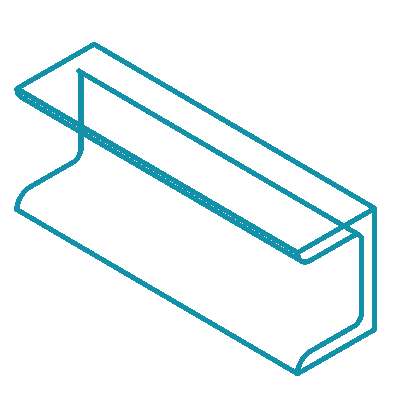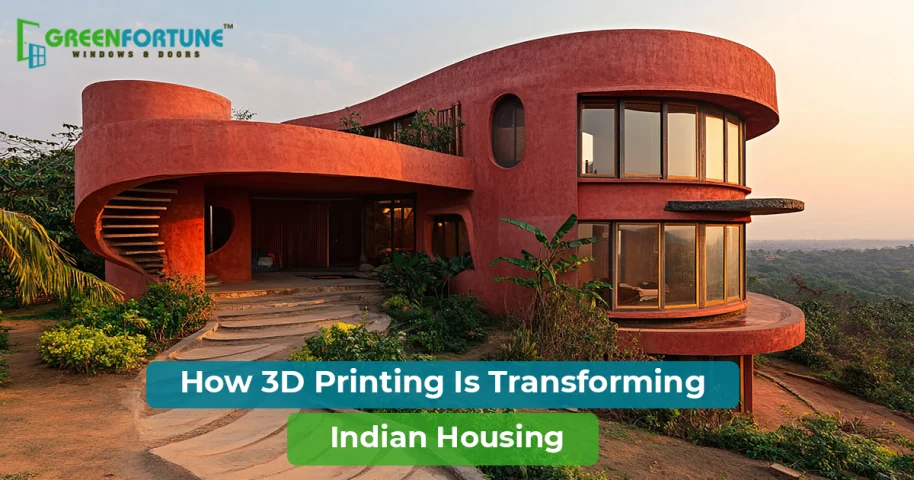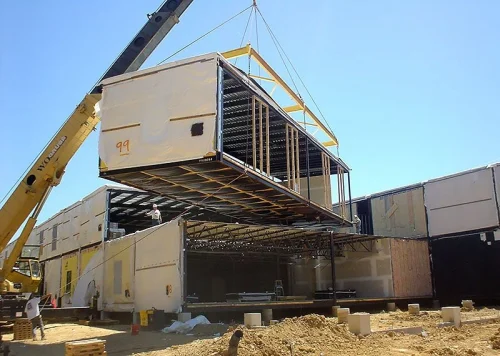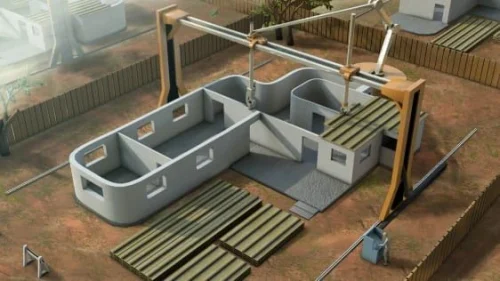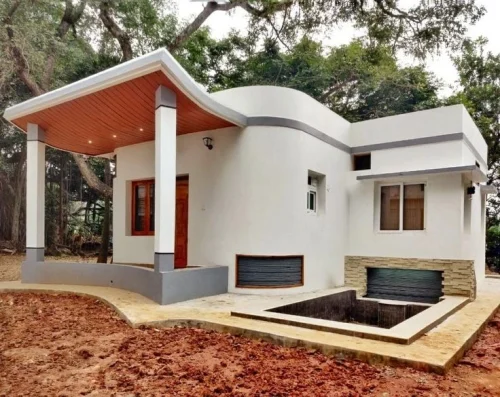
Simple Ideas To Transform Old Bengali House Design
July 15, 2025
Portable Homes in India: What They Are & Why They Are the Next Big Home Trend
July 18, 2025Table of contents
You’ve probably heard of 3D printing for tools or toys. But houses? Yes, it’s already happening in India. In fact, it’s not just happening — it’s moving fast.
3D printed houses in India are transforming the way we think about construction. They're fast, smart, cost-effective, and sustainable. And no, these aren't lab prototypes anymore — families have already moved into these homes.
If you’re curious about where it’s all headed and whether 3D homes are for real, keep reading. Let’s break it down step by step, without any fluff.
What 3D Printing Means for Housing
We’re not talking about plastic or tiny models. This is 3D concrete printing India — large robotic arms building actual houses, layer by layer.
These machines follow digital designs and pour a special concrete mix exactly where needed. That means:
- No bricks
- No steel framework in some cases
- No wood
- No unnecessary waste
Just a machine, a few operators, and a ready-to-live house rising out of the ground in record time.
How Fast These Homes Are Built
In 2021, a startup named Tvasta built India’s first 3D-printed house at IIT Madras. It was done in under 5 days.
Since then:
- The Indian Army has used it for site barracks
- Private players are testing it for rural and affordable housing
- The Ministry of Housing has taken an interest in mass-scale trials
It’s not theory anymore. 3D printed houses in India are actually being lived in.
What Materials Are Used
This isn’t the same concrete you see on regular sites. It’s a fast-setting, high-performance mix made just for 3D printing.
Here’s why that matters:
- Less cement means lower emissions
- No need for formwork or moulds
- It dries quicker, so you build faster
- Less water is used overall
All of this helps cut both costs and waste, a big reason why people are calling them affordable 3D printed homes India.
What Designs Are Possible
Want curves, cut-outs, planter walls, or unique shapes? You don’t pay extra for creativity. The robot just follows the drawing.
That makes 3D printing great for:
- Compact urban plots
- Disaster-relief shelters
- Military use
- Modern villas in small towns
3D printed houses in India aren’t just quicker. They’re smarter by design.
What the Costs Look Like
Let’s talk numbers — real, on-ground numbers.
Today, 3D printed houses in India cost between ₹1,200 to ₹1,500 per sq. ft. For a 600 sq. ft. house, that means ₹7–9 lakh including design, materials, printing, and finishing.
Compare that with traditional construction:
- ₹1,800–₹2,500 per sq. ft. in most cities
- ₹10–15 lakh for a small house
- Longer timelines, more labour
In short, you’re saving both time and money. That’s what makes affordable 3D printed homes India a serious option for low-income housing, especially in tier-2 and tier-3 towns.
What Makes 3D Printed Homes So Efficient
There are 4 big wins here:
- Speed – A basic home can be done in 5 to 10 days. No delays, no seasonal waiting.
2. Cost Control – Minimal labour, no rework, no heavy machinery rentals.
3. Waste Reduction – No leftover bricks, cement bags, wood, or plaster.
4. Flexibility – You can scale from one house to 100 using the same machine and design.
Builders also save on permits, rework, and margin loss — especially useful in high-volume, low-cost housing projects.
What Still Needs Work
Even though it sounds like a dream, there are some tough realities. These are the main 3D construction printing challenges India is facing right now:
- Approvals and Codes
Building codes in India don’t fully cover 3D printed structures yet. So even if your house is strong, some authorities are unsure how to process the plan. - Skilled Operators
Very few people in India know how to operate large-scale 3D construction printers. That slows down adoption. - Limited Raw Material Suppliers
You need special concrete mixes for printing — not every hardware store sells this. And importing adds cost. - Cost vs Scale
Printing one home is cheap. Printing a colony is still a challenge because of machine transport, terrain, and logistics.
Still, these problems are being worked on. More companies are entering the space. Builders and planners are getting trained. And approvals are starting to move faster.
- Cost vs Scale
What the Future Looks Like
By 2030, India may be building entire housing colonies using 3D printing.
The government has already hinted at including 3D printed homes in future Pradhan Mantri Awas Yojana schemes. Startups are scaling machines to make two-storey homes. And hybrid designs — where the ground floor is printed, and upper floors are prefab — are being explored.
In fact, IIT Madras and Tvasta are already working on multi-family 3D housing models.
We’re still early, but the foundation is solid.
Final Thoughts
If someone told you 10 years ago that a machine could build your home in under a week, you’d laugh. But today, 3D printed houses in India are very real — and growing.
They’re cheaper. They’re greener. They’re faster. And they might just be the key to solving India’s housing crunch, especially in the affordable and disaster-resilient segments.
Yes, there are challenges. But that’s true for any new tech. What matters is that it’s no longer a fantasy. It’s happening — and soon, we’ll see 3D homes in our cities, towns, and even villages.
If You're Building Or Renovating A Modern Home, Pair It With Smarter Materials
TheGreenFortune.com offers high-performance uPVC doors and windows designed for India's climate. They block UV rays, reduce outside noise, and last longer than traditional frames. Whether you're going solar or 3D printed, these doors and windows make your home cooler and more efficient.
Browse the full range at Green Fortune and future-proof your space.
FAQs
- Can 3D printed houses in India handle extreme weather like floods or earthquakes?
Yes, many 3D-printed homes are being engineered to handle region-specific challenges like high humidity, heat, and seismic activity. The uniform, joint-free construction actually reduces weak points compared to traditional methods. Some pilot structures in India have already passed basic structural safety tests for disaster zones. - Are 3D-printed homes comfortable in India’s hot climate?
They can be, but it depends on the materials used and how the home is finished. Some printed walls may need additional insulation or coatings to block heat in areas like Gujarat or Tamil Nadu. Smart design choices like roof ventilation and shaded openings also make a big difference. - Is it possible to design a custom layout for a 3D printed house?
Yes, that’s one of the biggest advantages of 3D printed houses in India. You’re not limited to fixed blueprints — curved walls, unique shapes, and built-in furniture features can all be printed with precision. As long as the digital model is ready, the printer can build it exactly as planned.


